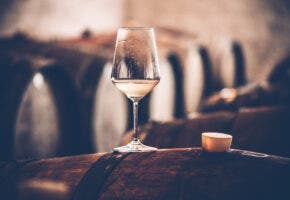What is Chenin Blanc
A white grape originally from France’s Loire Valley, Chenin Blanc dates back to at least the 9th century, where it was first recorded by the Abbey of Glanfeuil as growing on the banks of the Loire River. Chenin Blanc grapes are yellow-green on the vine and hang in conical bunches.
An early budding but late-ripening grape variety, Chenin Blanc produces low to moderate yields. It is a grape that, under the right circumstances, can benefit from the appearance of botrytis cinerea, or Noble Rot, a fungus that shrivels grapes and causes their juices to concentrate and intensify.
Vines can thrive in areas with clay, schist and sandy loam, but the soil type will often dictate what style of wine is ultimately produced. Calcerous clay, as is found in Vouvray, produces round wines with acidity that are anchored and substantial, while limestone-based soils bring forth more acidity than weight. Clay-based soils are best for the richer styles of Chenin Blanc that are typically vinified sweet.
A particularly identifiable grape based on aroma and palate, Chenin Blanc is often known for its notes of honey and straw. Wines are also often described as having a perceptible minerality, as well as a palate that is rich in stone-fruit flavors. Other fruits that are often prominent on the nose and palate include green apple, guava, pear and quince.
When Chenin Blanc is made into a dessert wine, it often develops more tropical and floral notes, including pineapple and white flower. Round and balanced on the palate, Chenin Blanc has the ability to age for a long time in bottle.
France
Some of the most famous Loire Valley wines—which run the gamut in style from sparkling to sweet to off-dry to bone-dry—are produced from this grape, including wines from the appellations of Vouvray, Savennières, Quarts de Chaume, Coteaux du Layon and Crémant de Loire.
South Africa
In addition to France’s Loire Valley, Chenin Blanc is well known in South Africa, where it is also referred to as Steen. There, it can be traced back at least to the mid 1600s. South Africa has the second most Chenin Blanc in the world under vine, second only to France. While the grape was traditionally used as a blending component, today, it is the country’s most prominent white wine variety, capable of producing world-class selections that span the stylistic spectrum, from dry to sweet to sparking and just about everything in between.
Global Production
In Australia, Chenin Blanc is largely grown as a blending variety. The grape is often blended with Chardonnay, Sémillon and Sauvignon Blanc in wines produced throughout the country. Chenin Blanc in Australia is known for its much more pronounced tropical notes.
Elsewhere in the New World, the grape is still making a name for itself. New Zealand grows a small amount, most of which is produced in a sweet dessert style. In the United States, Chenin Blanc is grown in California—most notably in Napa Valley and Mendocino—Washington and Texas, although producers in New York, Missouri, Wisconsin and Arizona have recently begun experimenting with it as well. Growers in Argentina, Brazil and Mexico have long since used the grape in large production white wine blends. Canadian winemakers also grow Chenin Blanc in the Okanagan region of British Columbia, as well as in Ontario.
Synonyms
Chenin Blanc grapes are found in sparkling, white, and dessert wines.














